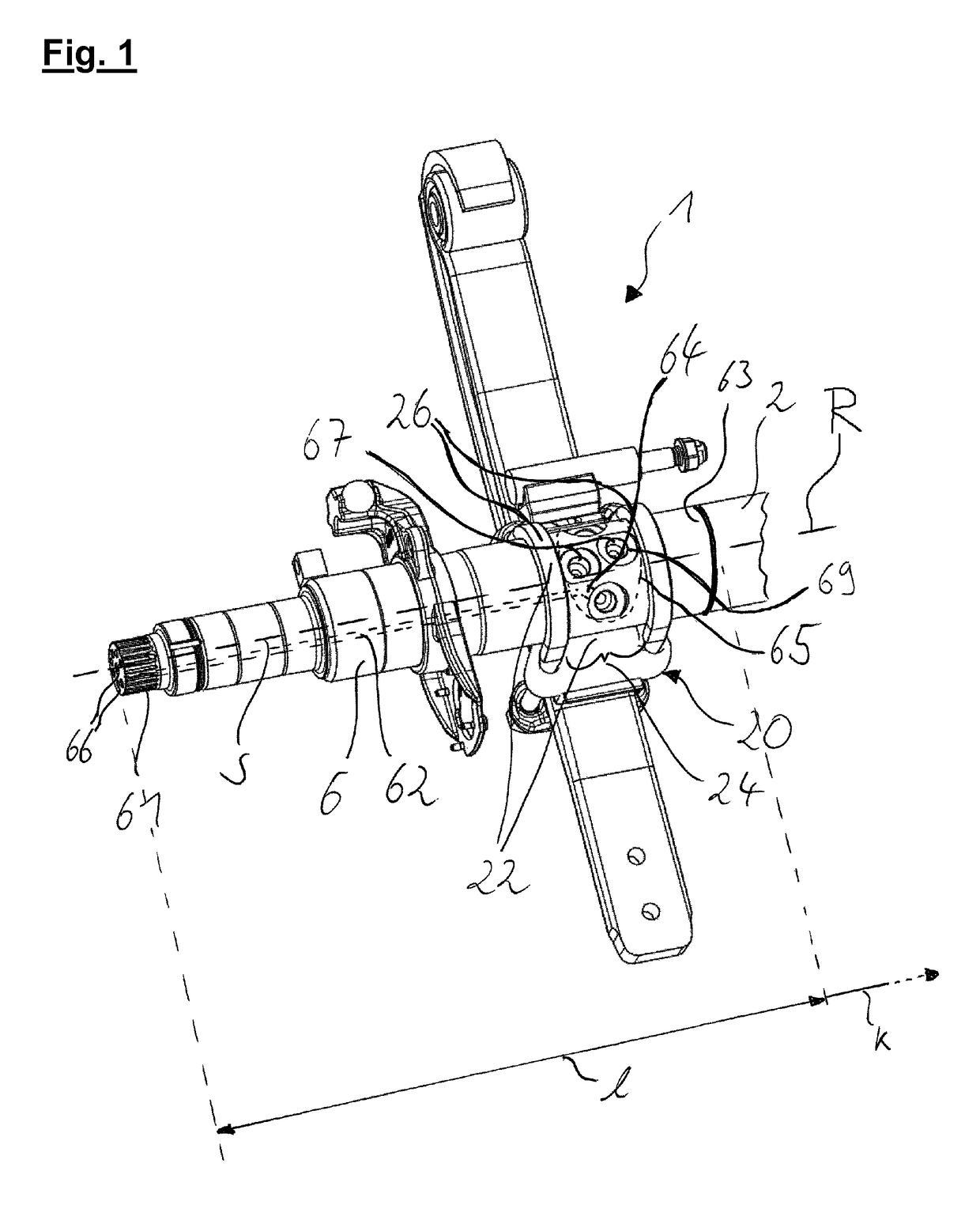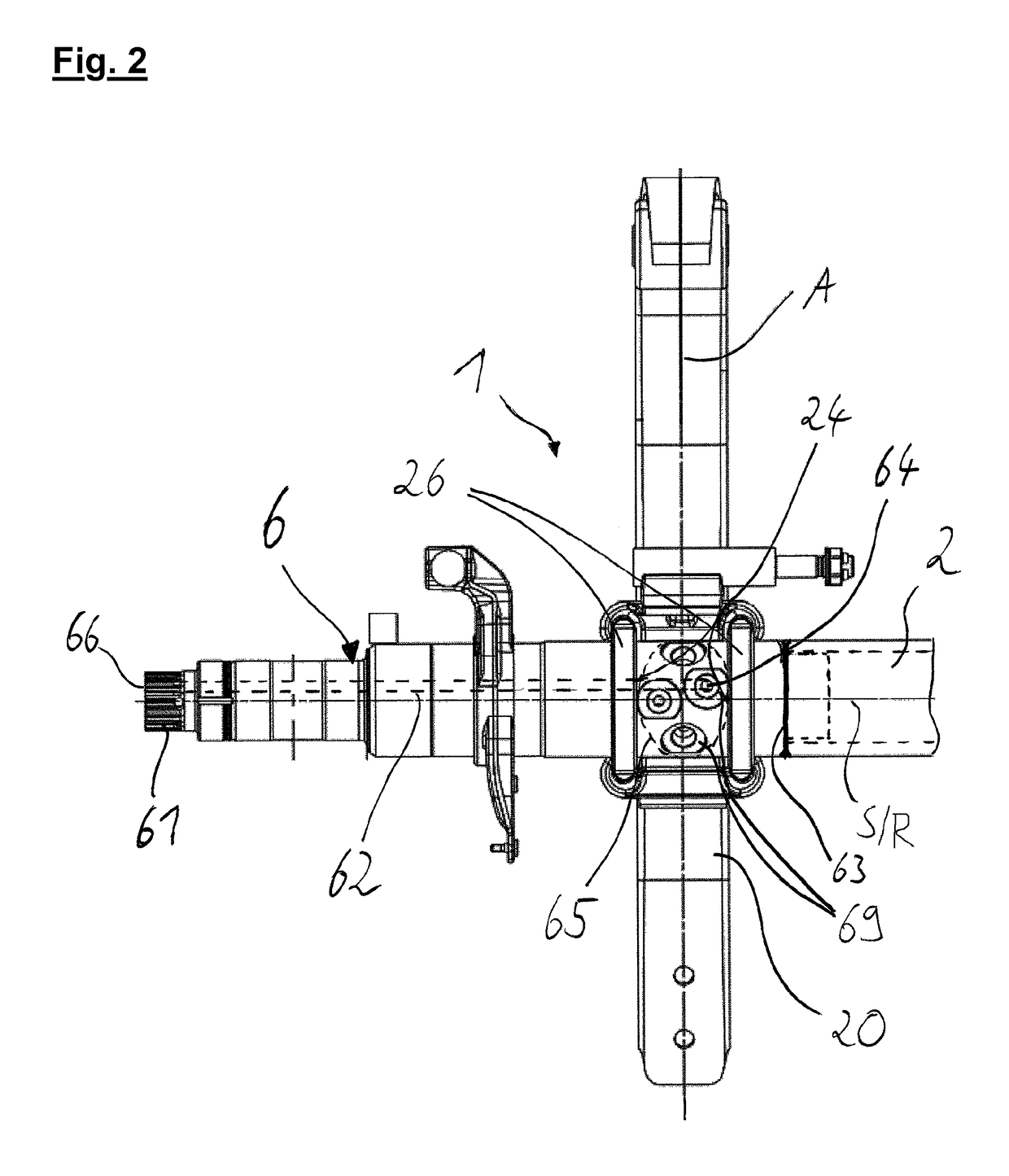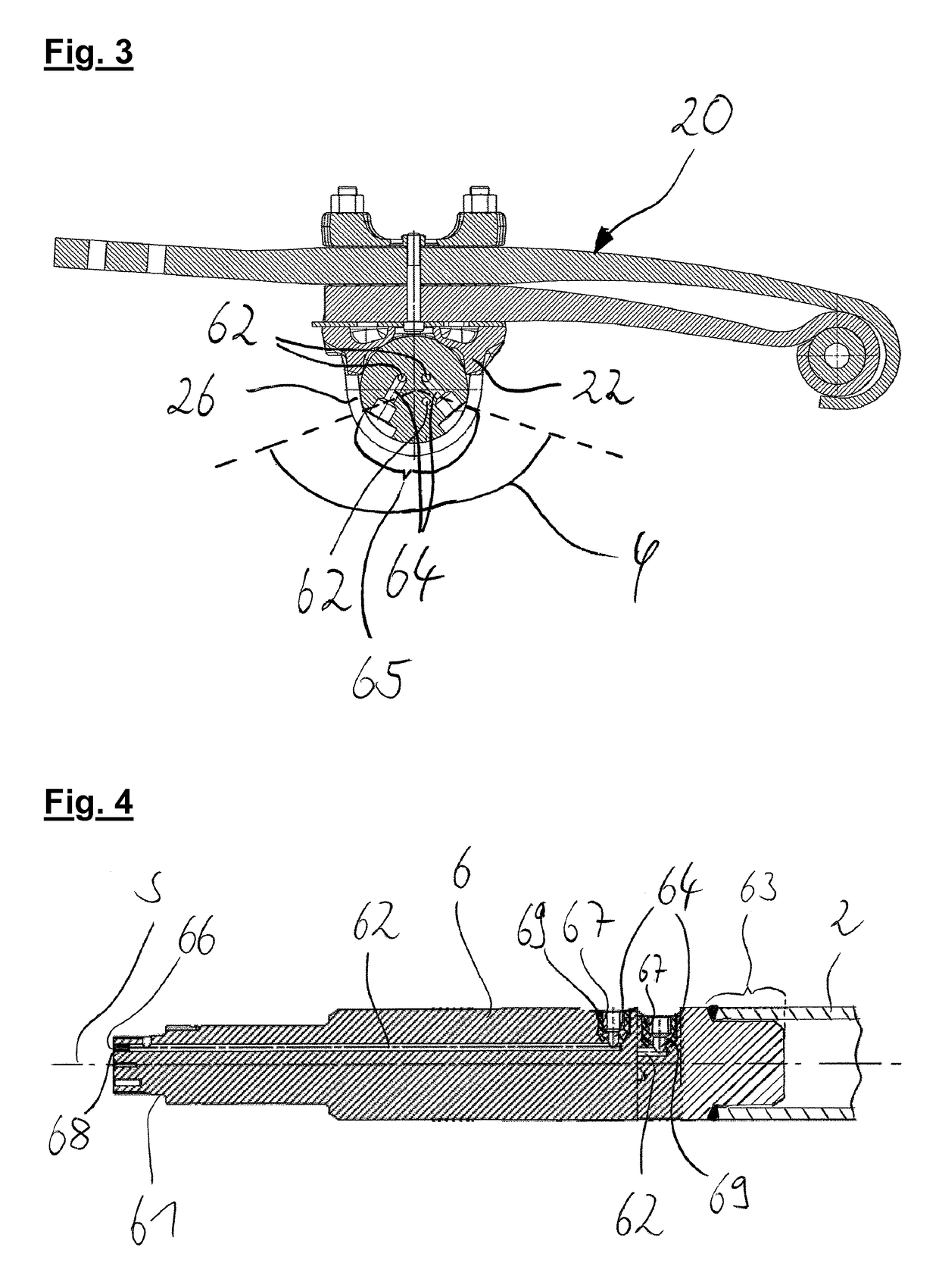Axle unit
a technology of axle unit and axle unit, which is applied in the direction of suspension arms, wheel manufacture, transportation and packaging, etc., can solve the problems of reducing the overall strength of the stub axle, and achieve the reduction of production complexity, the total weight of the axle unit may be significantly reduced, and the production efficiency of the axle uni
- Summary
- Abstract
- Description
- Claims
- Application Information
AI Technical Summary
Benefits of technology
Problems solved by technology
Method used
Image
Examples
Embodiment Construction
[0023]In the preferred embodiment of FIG. 1, the chassis system 1 comprises a stub axle 6, a suspension arm unit 20 and an axle tube 2 which is preferably secured to the stub axle 6. The stub axle 6 extends substantially along a stub axis S and at least in regions is configured rotationally symmetrically to this stub axis S. The rotationally symmetrical configuration of the stub axle 6 here relates in particular to its outer faces, since preferably at least one longitudinal channel 62 and at least one transverse channel 64 are provided in the interior of the stub axle 6, constituting a deviation from the rotational symmetry. The figure shows (in dotted lines) only one of the longitudinal channels 62 arranged in the stub axle 6. At its end facing away from the axle tube 2 and shown on the left in the figure, the stub axle 6 has a force transmission portion 61. The force transmission portion 61 serves to secure an additional unit (not shown) and to transfer a moment from the additiona...
PUM
 Login to View More
Login to View More Abstract
Description
Claims
Application Information
 Login to View More
Login to View More - R&D
- Intellectual Property
- Life Sciences
- Materials
- Tech Scout
- Unparalleled Data Quality
- Higher Quality Content
- 60% Fewer Hallucinations
Browse by: Latest US Patents, China's latest patents, Technical Efficacy Thesaurus, Application Domain, Technology Topic, Popular Technical Reports.
© 2025 PatSnap. All rights reserved.Legal|Privacy policy|Modern Slavery Act Transparency Statement|Sitemap|About US| Contact US: help@patsnap.com



